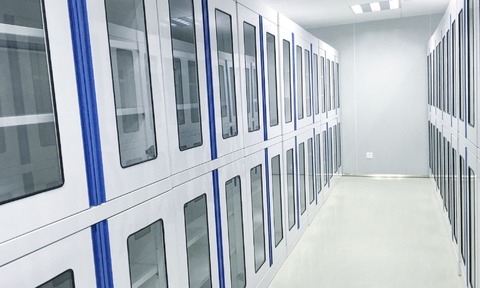
Finding lab spaces is difficult but there’s more to consider after you secure one. Switching sites takes careful planning, advises Rachel Houghton.
The current disparity between supply and demand for new laboratory spaces has created a backlog of laboratory users who are desperate for new space. However, when it comes to making the transition into a new space, moving laboratory equipment is never straightforward.
Extensive planning is required to successfully undertake a relocation project. The logistics behind relocating large laboratory equipment, not to mention the more hazardous items such as chemical cabinets, need to be considered as a priority, as well as your communications strategy. So here are the top dos and don’ts for a laboratory relocation:
Moving a simple office space requires extensive planning, thus it is no surprise that a laboratory relocation project requires further organisation. The specialist equipment that is being handled requires the right teams with the relevant training, such as heavy lifting certifications or operating stair lifts.
The other element to consider is the current and planned work taking place in the laboratory. Projects may need to be delayed or put on hold. Finding the right time slot that aligns with the new tenancy, doesn’t interrupt major projects and results in minimal downtime for the business will require detailed planning involving multiple stakeholders.
Moving a simple office space requires extensive planning, thus it is no surprise that a laboratory relocation project requires further organisation
Ask your moving company about how they work with other providers to get a sense of their collaborative approach. This will help ensure that items and equipment are moved correctly. Schedule a calibration session pre and post move to avoid any pitfalls.
Moving to a new laboratory will likely prompt various questions and conversations from your team, so your internal communi- cations must cover all the potential topics. For example, the move could mean that some employees are now further away from work, creating difficulties for them that will require lifestyle adjustment.
Make sure you are communicating the benefits of the move. Will the new facilities mean more in-depth and detailed projects can take place, with more opportunities for people to develop their skills? Lead with this messaging to encourage your colleagues on board.
Create a communications plan with the key dates that your team needs to know, and how those dates impact them. You can also signpost them to the relevant manager and senior leaders if they have any questions.
Storage is an excellent way to safely keep hold of your equipment and assets in the short term while the new laboratories are prepared. However, for those older items that don’t have a confirmed future at the new location, simply leaving them in storage indefinitely is not recommended.
There are countless alternatives to storage that eliminate expensive storage fees and landfill charges and can instead make the business money. The first step is understanding your assets. By undertaking an asset audit, you can see exactly what you have and what condition it is in before making decisions about what to keep and what to part ways with.
Donate, don’t discard
Once you have this information and your space plans at the new laboratory, items can be graded based on their suitability for the new space. You can then determine which will be kept and what items are no longer needed.
Reselling laboratory equipment is a great option, with the opportunity to recoup some of the costs of the relocation.
Ask your moving company about how they work with other providers to get a sense of their collaborative approach
Donations to not- for-profit organisations or schools that need new science equipment are also a popular choice as they contribute to social value goals while helping local communities that the business operates in. If these alternatives have been exhausted and there are remaining items, then recycling is your best option.
This process will still produce minor carbon emissions as not all elements can be completely separated into their composite material, but it still promotes a more circular approach.
Invest in skills
Ensuring expensive and important equipment such as centrifuges, incubators and microscopes are moved with the utmost care is the number one priority within these projects. Damage or loss of equipment will result in high replacement costs and must be avoided. Working with skilled and trained movers who have a clear understanding of the technical distribution required is essential.
Make sure your asset register details the value of all items and that your moving company has all the right insurance. It’s worth physically tagging high value items as such, in order to make it crystal clear that extra care needs to be taken when moving them. Following the full asset audit, items can begin to be packed away with additional precautions such as more protective covers.
Packing equipment into moving vans will also be planned to the detail to ensure delicate items are not packed on top of one another. For items such as medical fridges that must remain below a certain temperature, movers will ensure these remain connected to a power source during the move.
Once at the new site, items are unloaded to their pre-agreed locations so the movers may begin reassembling equipment and furniture.
Coordinating a laboratory relocation will require all the parameters mentioned above to be successful. However, once completed, the new space will support new research and business growth, creating a better and stronger team with new goals. When you look to move to your new space, make sure you partner with the right team to help you get there. Make sure they understand your vision and values and work towards them as you do.
Rachel Houghton is managing director of Business Moves Group

